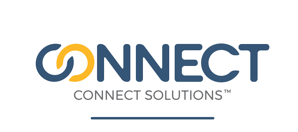Business owners are often told they need to boost employee productivity in order to stay competitive. At the same time, many people believe employee engagement is crucial to a healthy bottom line. At times, it probably seems like you’re being pulled in two different directions, trying to reach these two seemingly different goals.
Download our free guide to find out how to increase productivity in the mobile workplace.
What if someone told you employee engagement and productivity are actually related to one another? The truth is you can’t have one without the other.
DEFINING PRODUCTIVITY
Most organizations see employee productivity as their end goal: Productive employees finish more work, bring fresh ideas to the table, and help you produce or sell more. It’s little surprise most think productive employees are key components of a successful business. Unproductive employees will simply drag your firm down.
And the research shows exactly that: Productive employees boost the firm’s bottom line, while unproductive employees actually cost you money.
DEFINING ENGAGEMENT
If productivity is a measure of the work your employees do, what’s employee engagement then? It’s fairly easy to mix up the two concepts: If your employees are being productive, it may seem like they’re engaged. While they might look like productive employees (remember: employee engagement and productivity go hand in hand), these employees go beyond productivity.
Engaged employees are those invested in the firm and their work. They’re the ones who speak up in meetings, who want to know more about what the company does and why it does it. They’re the ones who actively think about the firm’s processes—and how things can be improved. They’re communicative, and they bring enthusiasm to their work.
CONNECTING THE TWO
Employee engagement and productivity go hand in hand, but how exactly do the two connect? It should be clear there’s some overlap between them: Productive employees and engaged employees have many of the same traits, such as being creative thinkers and getting a lot done. So what’s the difference?
Just as research shows that unproductive employees can cost your firm money, the literature also says engaged employees are productive employees. It’s easy to see why: Employees who engage at work want to be more involved and informed. They bring more energy to their work, along with a more positive attitude.
Engaged employees are creative thinkers with fresh ideas and they’re collaborative team players, which allows them to get things done more efficiently—leading to better productivity. Their enthusiasm for their work also reflects in their work ethic and their ability to get things done.
In short, engaged employees have a can-do attitude, which means they can indeed do more. Productive employees might get a lot done, but they may not be engaged.
HOW CAN YOU ENGAGE EMPLOYEES?
Employee engagement and productivity are closely intertwined, so firms that shift their focus to engaging their employees will also boost productivity. In fact, employee engagement has been shown to boost productivity by up to 38 percent!
The question is no longer whether your firm needs to focus on one or the other, but how you can encourage employee engagement and productivity. There are plenty of ways firms can engage their employees, most of them relatively simple. Encouraging better communication, for example, is often a simple step for an organization to take: Implement a new, secure employee communications app, and watch as your team members work better together.
Learning and development opportunities and gamification tactics are also effective employee engagement strategies. Incentives such as peer recognition and rewards are also easily implemented methods of engaging your employees.
THE SAME GOAL
Employee engagement and productivity are really the same goal. You shouldn’t be distracted by concerns about employee productivity. Instead, focus on employee engagement, and productivity will follow naturally.


